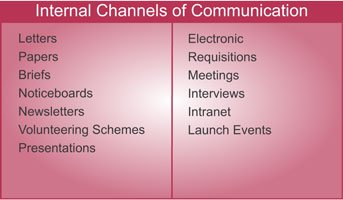
Effective communication is a key element of any business’s operations. How well a business communicates with its stakeholders, both internal or external will have a big impact on how well that business performs in the markets it serves. Kellogg’s is the world’s leading supplier of cereals, with production bases across the globe and serving over 180 countries. Kellogg’s has maintained its position as the market leader for most of the last century in the face of growing competition and changing global tastes.
To a large part, this is due to it having a strong brand name, good quality products and a range that is tailored for individual countries. Having established this position, communication with its customers, suppliers and other stakeholders has been vital in Kellogg’s maintaining its competitive edge. This case study explores the role of communication as a central part of its operations strategy, with particular focus on how it managed its ‘Origins’ initiative. The main mission of the Origins project was to:
- Reinforce the natural origins of Kellogg’s ingredients with consumers, namely the cereal grains themselves
- Deliver the highest quality ingredients for local consumers
- Commit to taking good care of the farmers and the habitat and build impactful and innovative programmes
- Tell the story of the special people and places that provide Kellogg ingredients, with pride and credibility.
Emanating from these, successful communication of the Origin’s mission would help improve the perception of breakfast cereal amongst consumers as being ‘made from natural ingredients’ and that Kellogg’s ‘support local farmers’, helping to increase market share through increased purchases by retail outlets, especially the main supermarket customers and by the final consumers of Kellogg’s cereal products.
Communication Process
The basic communication process involves transmitting information from a sender to a receiver. However, effective communication requires not only that the message or information is received but also that it is understood. The following diagram illustrates the main stages involved in any communication process.

Encoding is the stage when the sender transforms her/his idea into a communicable message. This can involve a range of elements including words, sounds, images and symbols. The key is to ensure the message is appropriate to the intended recipients or receivers, (sometimes referred to as the ‘audience’) and that it is easily understood.
As market leader, Kellogg’s is constantly under threat of competition from both existing competitors and new entrants. Consumer research identified two key learnings which led to the development of the Origins project in June 2014.
- Consumers increasingly want to know how the foods they consume are made and where they come from and are of the belief that foods that have identifiable ingredients are less processed/better for you.
- The opportunity is to reassure consumers about the simple goodness of our foods i.e. Kellogg cereals are made from grains and sunshine with a minimal amount of processing.
- These learnings were distilled to the project’s main communication message
- ‘It all begins with sunshine and grain’.
- The senior managers, having encoded this main message, broke it down into another three key messages to transmit to different stakeholders:
- All Kellogg cereals start with the same thing: sunshine and natural grains like wheat, oats, barely, rice and rye , helping millions of people get a great start to the day
- Kellogg works with farmers across Europe to ensure its cereals contain only the best quality grains
- Kellogg helps farmers improve efficiencies and optimise their yields while adopting sustainable practices to help preserve the natural habitat around them.

Having prepared these messages, the sender must then select the best way to transmit the messages to their intended receivers/audiences. This way of transmitting messages is called the channel or ‘medium’ of communication. Effective communication relies on selecting the most suitable channel.
This aspect must be well planned as sending a message using an inappropriate medium will limit the audience’s response and inhibit the desired response. Selecting the correct channel will ultimately depend upon the objectives set, whether the stakeholders being targeted are internal or external and whether the communication is formal or informal. The next two sections explore the main receivers of Kellogg’s Origins messages from the viewpoint of whether they are internal or external stakeholders and the main media used to communicate internally and externally.
Internal Stakeholders and Channels of Communication
There are many channels open for use to send messages to internal stakeholders. The selection of method or methods used to communicate depend upon where the information being sent is coming from, the content of the message and who the receivers are. The table below lists most of the methods that are available to senders within a business such as Kellogg’s:

Each has its place, although some tend to be used more often than others due to the ease of access for senders and ease of receipt for receivers. Formal messages tend to use letters, papers or meetings, for instance, messages relating to contractual issues and promotions. Informal messages, usually being less strategically important, or lacking confidential content, tend to use less formal channels such as e-mails or the intranet.
Effective internal communication was vital in ensuring the Origins project was launched on time and as successfully as possible. Specifically, different channels were used depending on whether it concerned the development of the project and required decision making or whether it was an announcement of the plan to the wider organisation. The former tended to involve more formal channels such as meetings, presentations and written documents, the latter involved more informal launch events and programmes where employees could volunteer to get involved.
External Stakeholders and Channels of Communication

External communication can take many forms, depending on who is sending the message, its purpose, its receivers and how important the message is. The following table indicates some of the main methods used for external communications, Whilst internal communications were important, in respect of achieving its stated goals, for Kellogg’s, external communications were vital in relation to the Origins campaign in order to broadcast the messages to a large audience.
Kellogg’s marketing team, once the main elements of the campaign were understood, worked on how best to reach the main external stakeholders. They set objectives based on maximising the ‘reach’ of the target audience and then selected the different channels in order to do this. As a broadcast medium, TV advertising is a very efficient way of doing this, as well as using public relations to get messages into the press.
Furthermore, consideration must be given to what shoppers see in the stores themselves. Point of sale displays used in major supermarkets involved a visual display of a tractor made up of cereal boxes. This was aimed at consumers to help demonstrate the ‘from seed to spoon’ link between the farmers and those eating the product.
These displays and other, similar point of sale attractions helped increase the value of sales by 12%, reflecting a good choice of media appropriate to the receivers.
In order to communicate more complex messages, a storybook advertisement was made called ‘Kids want to know why’ which illustrated were Kellogg’s food came from. The medium for this was a ‘mummy blogger’ online media page. This proved very effective as a high proportion of mums responded with praise for the content.
As important spokespeople for the campaign, farmers were contacted to help get their support for the environmental aspects of Origins. An important aspect of this was how Kellogg’s used sponsorship of the farming community’s ‘Open Farm Sunday’ campaign.
The key message used here was how cereals come ‘from seed to spoon’ Farmers were also informed about how using natural methods benefitted both the environment and their own yields and were also given advice and detailed documents on how to improve the quality of their grain.
Barriers to Communication

Whenever considering communicating effectively, a vital element to consider is what barriers to communication, (often referred to as ‘noise’), exist. There are many barriers that may exist, but often senders may be unaware until too late, especially in a major project such as Kellogg’s Origins project. Consequently, knowing and removing likely barriers in advance and having an effective feedback procedure are vital in ensuring the goals of communication are met.
Barriers to communication can take many forms. Often the main barriers can be linked to four main types:
- Technical (how easy it is for an intended receiver to receive the message)
- Amount of information (how easy it is for receiver to absorb information)
- Semantics (receiver’s ability to understand what has been sent)
- Speed of Receiver Response (how quickly receivers react to or respond to a message).
For Kellogg’s, it is vital that such barriers are reduced or removed so that communication is not inhibited. In respect of the campaign, the Public Relations media proved highly successful in gaining interest and ultimately purchases. An initial survey by Kellogg’s had revealed results that 43% of 2000 primary school children had never visited a farm and 17% were unaware that vegetables were grown on farms. The survey results, in full written form, would have been a barrier to reaching young children. However, Kellogg’s built upon these statistics and utilised ex JLS member JR Gill as an Origins celebrity media ambassador to spread the ‘from seed to spoon’ message. Selecting the right channel, a celebrity ambassador, for the young audience, and combining this with carefully selected PR coverage on TV and in the press, the barrier to communication was removed and interest and purchases surged as a result.

The communication process, though simple in its depiction of relevant stages, involves a complex set of interactions between senders, receivers, channels and contexts to ensure messages are communicated effectively. Kellogg’s carried out research at every stage of the Origins campaign to help it evaluate how effective the campaign had been and to what extent communication barriers had affected the achievement of the goals set by the directors.
In respect of maintaining and increasing sales, feedback from its key supermarket purchasers was positive, with each of its top five stores experiencing sales growth, reflecting on effective promotion campaigns being undertaken.
The response by parents’ blogs was also very positive, with 96% of respondents liking the factual content of the Origins campaign. This showed how the message, using relevant images and content for children and parents, helped them understand the message that Kellogg’s cereals are made from good inputs with minimal processing.
The pursuit of effective communication is something that can never be taken for granted, instead, it should be viewed as being a perpetual cycle involving assessment and evaluation. Encoding a clear message is only part of the process.
Consideration of the best channels needs to be made, involving reflection on the aims of the communication, the intended audience, whether the receivers are internal or external and opportunities for giving and receiving feedback quickly. Any barriers to effective communication should also be considered, both before and after messages are sent, and necessary amendments made to continually improve the process. Kellogg’s, through its understanding of all of the key elements of the communications process and its flexibility in responding to feedback, showed how effective communication can help achieve its strategic targets.



